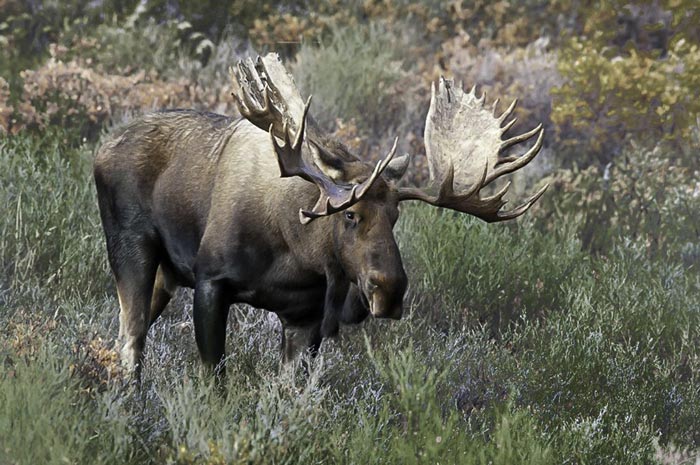
© 2012 Michael Leggero. All Rights Reserved.
Other animals of which you can enjoy making images are bison, elk and moose. While they don’t have the teeth and claws of bears and big cats, these can be much more aggressive and dangerous in the wild, especially during mating season.
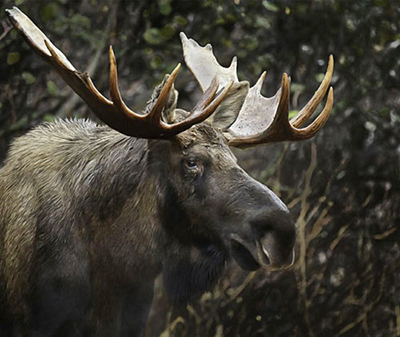
© 2012 Michael Leggero. All Rights Reserved.
MOOSE
Moose are often found in water in the early morning and during daylight hours. They are predictable animals, often returning day after day to the same place at the same time. Scout your area and get to know your subject. Be cautious here, because they are very, very territorial and will charge you if you get too close.
Once you have figured out where they will be, the best way to photograph them is to be prepared and then wait for them to appear. Setting up a hunting or photography blind is a great way to get some spectacular shots and stay safe. They are already camouflaged and have a small hole for the camera lens. Pick a good spot in your chosen location early in the morning. Make sure it’s in a position where the sunlight won’t be reflecting off your lens and where you can get a clear view of your subject. Bring a chair and your iPod because you will probably be sitting and waiting there for some time.
Wildlife photography is all about patience. Early morning is not the best time for bright light, so a strong tripod is a key piece of equipment. Sometimes you will have to shoot 1/60th of a second with a 600mm lens. Use live view with a cable release and you will be o.k.
If you don’t have a tripod with you then don’t worry. Usually these animals don’t make fast movements, so as long as you can hold the camera and lens steady and not jiggle, you could still get some great images with a slow shutter speed. If slow speeds are not your thing then push up the ISO. Today’s cameras allow us to use high ISO settings with less noise than ever before. Just remember, a picture with a lot of noise is better than no picture at all. Even if you can’t fix the noise in your post-processing with today’s technology, in a year from now you can revisit that image and the software will be much better and can probably fix it for you.
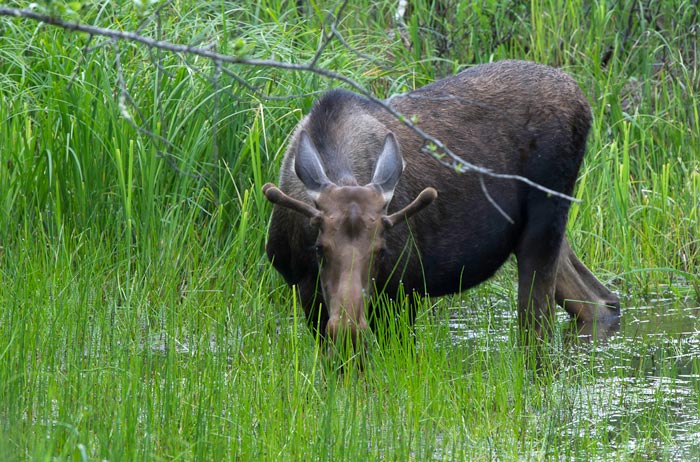
© 2011 Michael Leggero. All Rights Reserved.
ELK
Herds of elk are easy with which to work in national parks. Rocky Mountain National Park in Colorado is my favorite location to photograph elk, because they are very comfortable around people and you can often get relatively close to them. Check in at the Visitors Center before entering the park. Learn the rules and regulations for the park, so you know what is allowed and disallowed. You may also talk with the park rangers to get more information about photographing these beautiful animals.
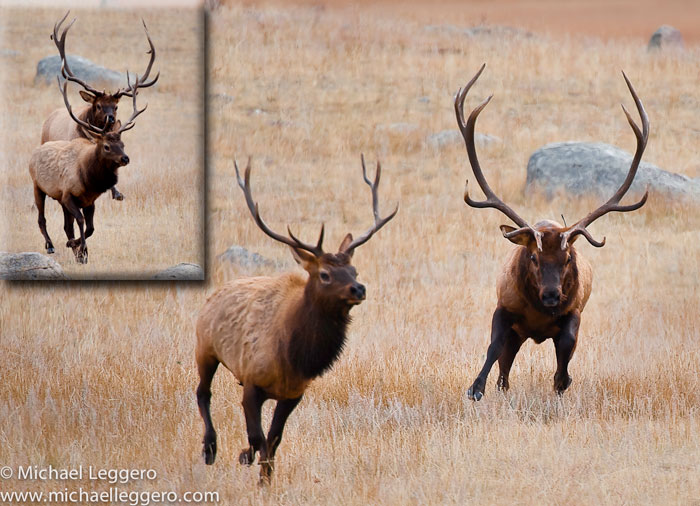
In the autumn season the elk enter their mating season and the males compete for dominance. This is when you can get those awesome images of the males chasing each other and fighting with their antlers! Just remember, they won’t stop for you, and they move fast. If you find yourself close to the action, make sure you have an escape route planned incase you need to jump out of the way fast. Usually a tree or a bush is enough to hide behind.
I’ve seen photographers use big tripods and gimbal mounts and those are great if you want to sit with a long lens far away. I commonly use just a monopod and a 200-400mm. It allows me to move with the herd and maybe even approach them. And, I can pick it up and run easily if I need to. Be sure you know as much as you can about their behaviors before you try getting close—experience is a major plus here.
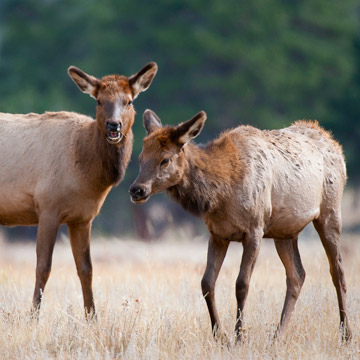
© 2009 Michael Leggero. All rights reserved.
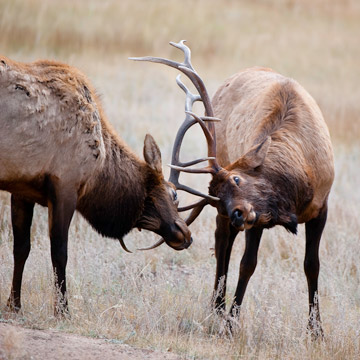
© 2009 Michael Leggero. All rights reserved.
And an added benefit; during rutting season in September and October, typically just before dusk until dawn, you may also get to enjoy the bugling sounds that are carried through the air—the males signal to other elk about how fit he is and his presence. Again, be sure to check with the park about viewing the elk during rutting season.
BISON
Bison are one of my favorite animals to photograph. However of all the ones with which I work, I honestly think these are the most dangerous. Once they are charging, nothing stops them. And they are always in herds, so it’s not just one you have to worry about, it’s all of them!
Yellowstone National Park in Wyoming and the southern edge of Montana has some great huge bison herds that are used to tourists and walk right along the roads. The problem is a bison walking along the road is not a great picture next to the family car. The other problem is that if you see them moving around, they don’t move slowly. They will not wait for you to get into position and get your shot.
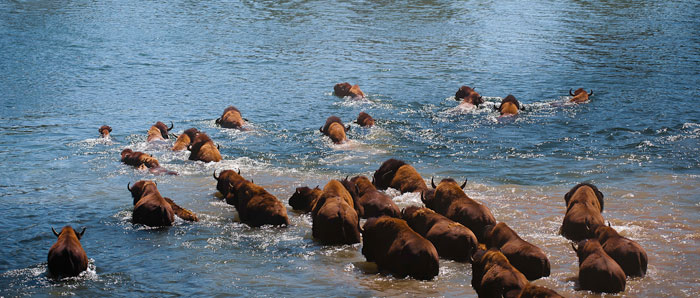
© 2010 Michael Leggero. All Rights Reserved.
Most of my bison photography is done on farms, but safety can still be an issue. They are big and they are strong. Once they start charging, they will not stop until they hit you and your precious camera. Chances are you’ll be pretty badly hurt or dead. Stay in a vehicle, don’t walk near them out in the open and respect them more than a bear!
I have a friend that raises bison, so I can get out and drive right into the pasture in the “somewhat” safety of a truck. And I say somewhat safety because of the huge dents in the side of the truck where they charged and rammed it!
Try to use the same method. Find a nice bison farm with a huge field and then go talk to the owner. Most bison farmers are a very relaxed sort of people. They are used to visitors and usually love to answer questions about their animals. Often they will have a small store selling jerky and meat products and that’s your foot in the door. Start becoming a customer and often they will let you go out in the pasture (in a vehicle) and take pictures all day.
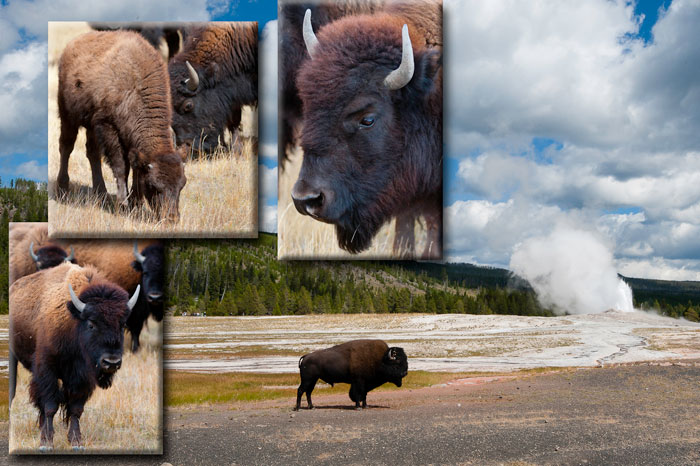
© 2009 & 2010 Michael Leggero. All Rights Reserved.
Large image taken at Yellowstone National Park & close-up images taken on a bison farm.
Farm bison don’t leave the pasture, so you can drive around during prime photo light and get the angles you want.
And farm bison are just plain safer for you. You won’t need a long lens–200mm is often more than enough. Other times you can use a wide angle lens and get very close to them. Sometimes you can even use a flash to add fill light to the subject.
Animals are so much fun and so enjoyable for me to photograph. It’s very relaxing to watch them move and interact with each other in their natural habitat. Their life is so much easier than ours; they wake up, wander around, maybe play a bit, and eat and eat some more. Then they go back to sleep and do the same thing again the next day. Photographing them not only allows me to share in those relaxing lazy day of theirs, but it allows me to share my adventures with you.
by Michael Leggero
All text & photos: © 2012 Michael Leggero. All rights reserved.

Leave a Reply